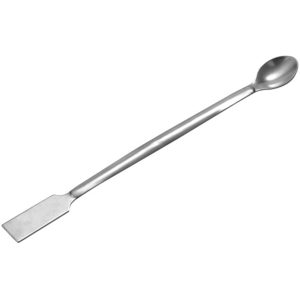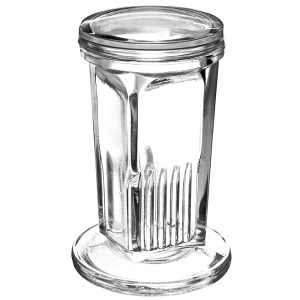Shop
Showing 901–920 of 1029 results
-
Chemicals
Sodium Thiosulphate
Sodium thiosulphate is an inorganic compound with the formula Na₂S₂O₃xH₂O. Typically it is available as the white or colorless pentahydrate, Na₂S₂O₃·5H₂O. The solid is an efflorescent crystalline substance that dissolves well in water. It is also often called sodium hyposulphite or hypo.Formula: Na2S2O3SKU: n/a -
-
Laboratory Equipment
Soil Sieves
A sieve analysis (or gradation test) is a practice or procedure used (commonly used in civil engineering or sedimentology) to assess the particle size distribution (also called gradation) of a granular material. Sieve sizes used in combinations of four to eight sieves.SKU: n/a -
Laboratory Equipment
Sonometer on Stand Complete
A Sonometer is a device for demonstrating the relationship between the frequency of the sound produced by a plucked string, and the tension, length and mass per unit length of the string. These relationships are usually called Mersenne’s laws after Marin Mersenne (1588-1648), who investigated and codified them.SKU: n/a -
Laboratory Equipment
Spade Terminals
The spade terminal design is one of the most popular electrical connectors, as it allows for easy attachment and removal from connections, such as connecting wire to circuit protection products. Waytek offers a variety of styles like standard, flanged, block and snap spades.SKU: n/a -
Laboratory Equipment
Spatula
In laboratories, spatulas and microspatulas are small stainless steel utensils, used for scraping, transferring, or applying powders and paste like chemicals or treatments. Many spatula brands are also resistant to acids, bases, heat, and solvents, which make them ideal for use with a wide range of compound.SKU: n/a -
Laboratory Equipment
Specimen Jar
Specimen Jars are similar to reagent bottles, made of thick Soda-Lime glass, a commonly used glass found in beverage bottles. The stoppers are machine ground to form a tight seal without the need for a rubber gasket. … These are strong sturdy bottles with a nice flared base and mouth.SKU: n/a -
Laboratory Equipment
Spiral Spring
A spiral spring, is a mechanical device which is typically used to store energy and subsequently release it, to absorb shock, or to maintain a force between contacting surfaces. They are made of an elastic material formed into the shape of a helix which returns to its natural length when unloaded.SKU: n/a -
Laboratory Equipment
Splints Wooden
Splints are typically long, thin strips of wood, about 6 inches (150 mm) long and ¼ inch (6 mm) wide, and are consumable but inexpensive. They are typically used for tasks such as lighting bunsen burners, as the length of the splint allows a flame to be lit without risk to the user’s hand, should the burner flare back.SKU: n/a -
Glassware
Staining Glass Jar
Staining jars are used to stain cells and tissues on microscope slides. Without proper staining , most cells are just a clear substance. Usually, you will use one dish for each type of stain. This polypropylene staining jar is used for staining microscope slides with dyes or chemicals.
SKU: n/a -
Uncategorized
Staining Glass Jar
Staining jars are used to stain cells and tissues on microscope slides. Without proper staining , most cells are just a clear substance. Usually, you will use one dish for each type of stain. This polypropylene staining jar is used for staining microscope slides with dyes or chemicals.
SKU: n/a -
Chemicals
Starch Soluble
Due to the fact that starch (amylum) is a polysaccharide , a long chain compound consisting of glucose monomers it has poor solubility in most solvents. Some starches are water soluble because of the hydroxyl groups involved in the polysaccharide chain, some like the branched form amylopectin are more insoluble.
SKU: n/a -
Chemicals
Stearic Acid
Stearic acid is a saturated fatty acid with an 18-carbon chain and has the IUPAC name octadecanoic acid. It is a waxy solid and its chemical formula is C₁₇H₃₅CO₂H. Its name comes from the Greek word στέαρ “stéar”, which means tallow. The salts and esters of stearic acid are called stearates.Formula: C18H36O2SKU: n/a




















